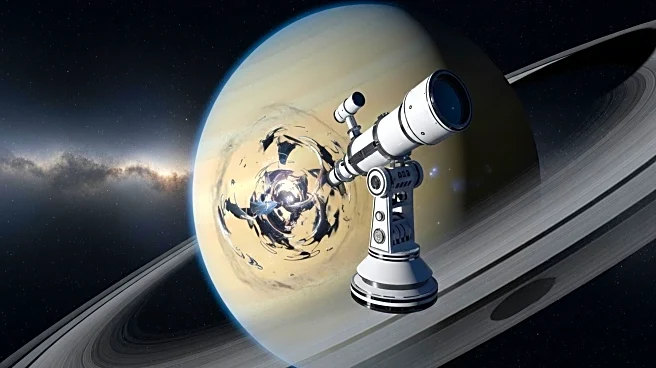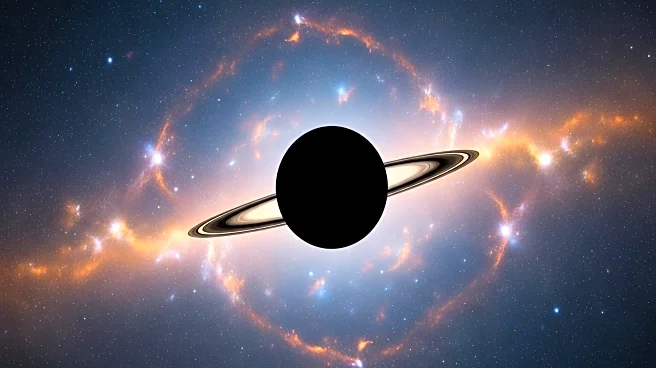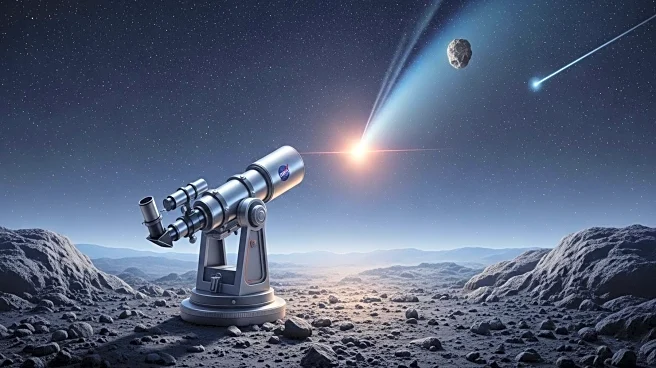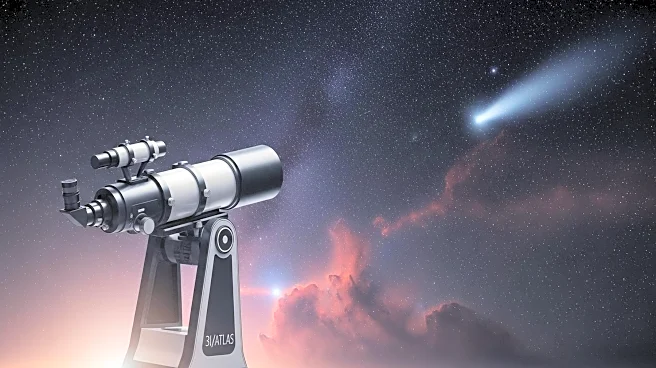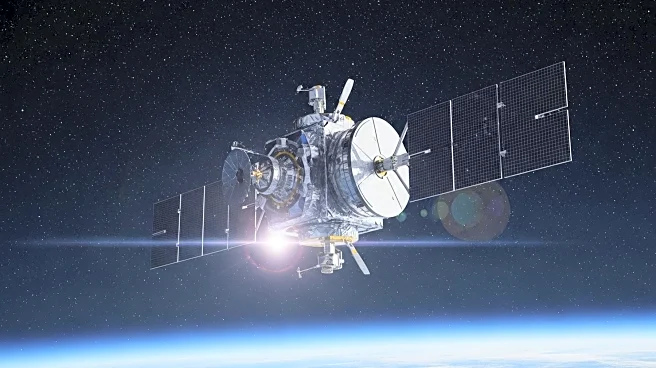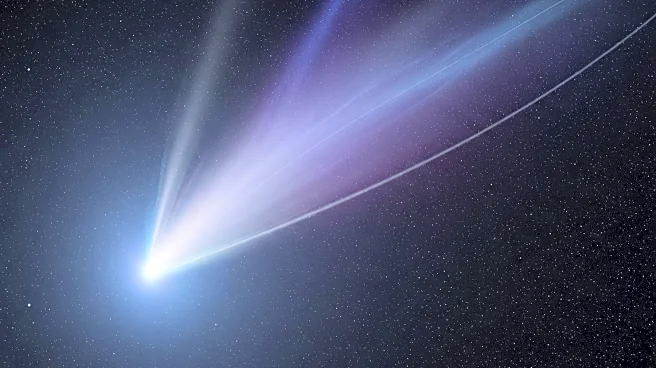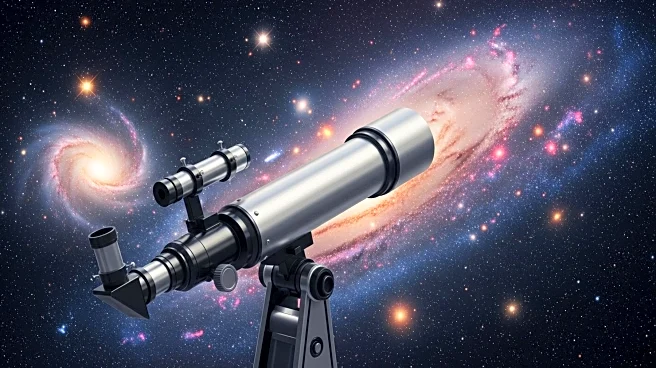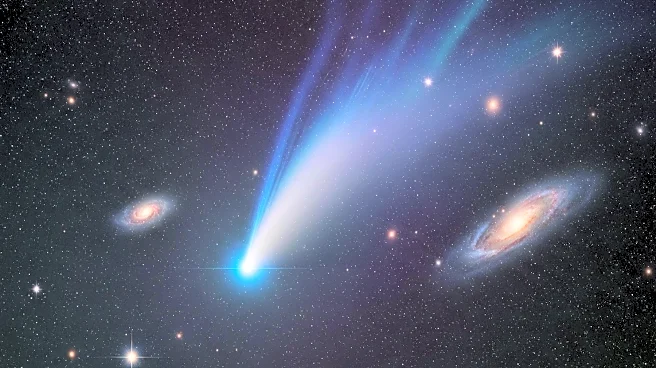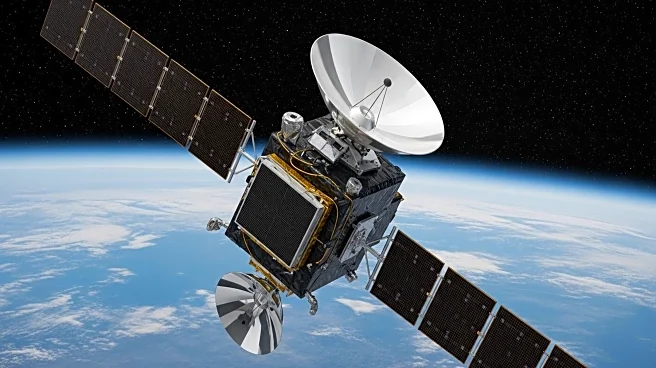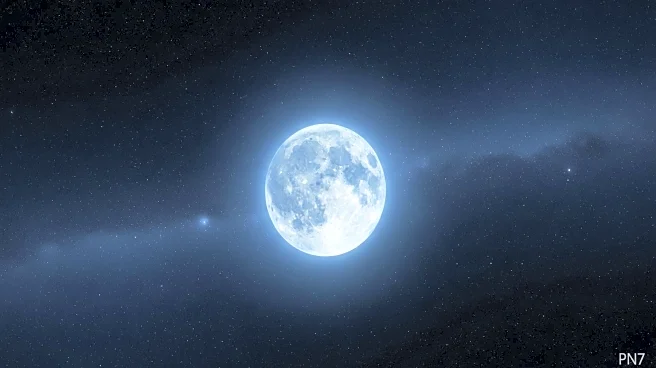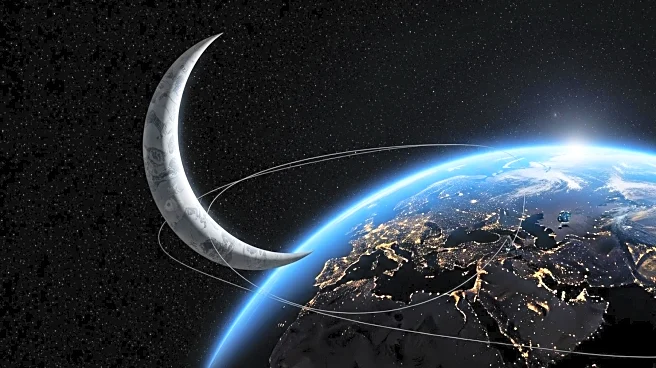What is the story about?
What's Happening?
Astronomers have discovered a new quasi-moon, named 2025 PN7, orbiting Earth. This tiny asteroid, measuring just 19 meters across, has been in a similar orbit to Earth since 1957. Although it orbits the Sun, its path closely resembles Earth's, making it appear as if it is looping around our planet. The quasi-moon's orbit is expected to remain stable for another 60 years before it moves away. Its distance from Earth varies significantly, ranging from 4 million kilometers at its closest to 18 million kilometers at its furthest.
Why It's Important?
The discovery of 2025 PN7 adds to the understanding of quasi-moons and their interactions with Earth. These objects, while not true moons, offer insights into the dynamics of celestial bodies and their orbits. Studying quasi-moons can provide valuable information for planetary exploration and the development of space technologies. The findings may also inform future research on the stability and behavior of quasi-moons, potentially impacting theories on celestial mechanics and the interactions between Earth and nearby space objects.
What's Next?
Researchers will continue observing 2025 PN7 to study its orbit and interactions with Earth. The findings may lead to a better understanding of quasi-moons and their dynamics, potentially informing future studies on celestial mechanics and planetary exploration. The discovery could also inspire new technologies for tracking and studying quasi-moons, offering insights into their behavior and stability. The study may influence future research on the interactions between Earth and nearby space objects, contributing to the broader understanding of celestial dynamics.
Beyond the Headlines
The discovery of 2025 PN7 highlights the importance of studying quasi-moons and their interactions with Earth. These objects offer insights into the dynamics of celestial bodies and their orbits, potentially influencing future research on planetary exploration and space technologies. This research may also shed light on the stability and behavior of quasi-moons, impacting theories on celestial mechanics and the interactions between Earth and nearby space objects.
AI Generated Content
Do you find this article useful?


